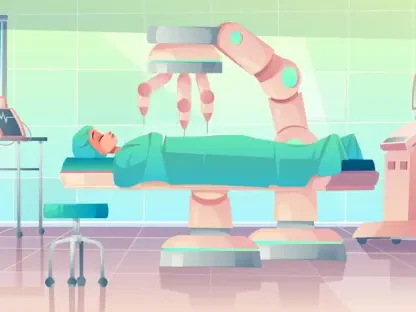I’m thrilled to sit down with Faisal Zain, a renowned healthcare expert with a deep focus on medical technology. With years of experience in the manufacturing of cutting-edge medical devices for diagnostics and treatment, Faisal brings a unique perspective to the fascinating topic of cognitive aging and brain resilience. Today, we’ll explore the remarkable world of superagers—individuals over 80 with exceptional memories—and how their brains might unlock secrets to combating Alzheimer’s and other memory disorders. Our conversation will delve into the unique characteristics of superager brains, the implications for future treatments, and the surprising factors (or lack thereof) behind their cognitive prowess.
Can you explain what defines a superager and why studying them is so crucial for understanding cognitive health?
Superagers are individuals over 80 who possess memory capabilities that rival or even surpass those of people decades younger. Their significance lies in how they challenge the notion that cognitive decline is an inevitable part of aging. By studying superagers, we gain insights into what protects certain brains from deterioration. They’re a window into resilience—potentially revealing mechanisms that could shield against diseases like Alzheimer’s. Their exceptional performance on memory tests, compared to peers, shows us that aging doesn’t have to mean memory loss, and that’s a powerful motivator for research into brain health.
What are some of the standout differences you’ve observed in the brains of superagers compared to typical older adults?
One of the most striking differences is in the structure of their brains. Superagers often show slower atrophy, meaning their brain mass doesn’t shrink as much over time. Specifically, we’ve seen larger neurons in the entorhinal cortex, a region tied to memory. Additionally, their brains tend to have less thinning of the outer layer, which suggests they lose fewer neurons and retain more white matter to support brain signaling. These anatomical traits seem to play a role in preserving their sharp memory, setting them apart from typical aging brains.
Can you unpack the role of amyloid plaques and tau tangles in Alzheimer’s, and how superagers seem to resist or cope with these?
Amyloid plaques and tau tangles are abnormal protein buildups in the brain often linked to Alzheimer’s. Plaques are sticky deposits that can disrupt cell function, while tangles are twisted fibers that block nutrient transport within neurons, particularly in the hippocampus, which is critical for memory. In superagers, we’ve noticed two fascinating patterns: some show very low levels of these pathologies, almost as if their brains naturally resist them. Others do develop plaques and tangles but still maintain sharp memory, suggesting a resilience mechanism—perhaps due to stronger neural connections or compensatory pathways—that allows their brains to withstand the damage.
How do these unique brain characteristics in superagers open doors for developing new treatments for memory disorders?
Studying superagers gives us a blueprint for potential therapies by highlighting both resistance and resilience. If we can understand how some avoid plaques and tangles altogether, we might develop preventive strategies to stop these pathologies before they start. For those who develop them but remain unaffected, it suggests treatments could focus on enhancing the brain’s ability to adapt or form new connections despite damage. This dual approach—prevention and adaptation—could revolutionize how we tackle Alzheimer’s and other memory disorders, shifting focus to protective factors rather than just damage control.
I was surprised to hear that lifestyle factors like diet or exercise didn’t seem to play a big role in superager status. What was your take on that finding?
Honestly, it was a bit unexpected. We often assume that healthy habits like regular exercise or a balanced diet would be key drivers of cognitive longevity, but our observations didn’t show a strong correlation among superagers. This doesn’t mean lifestyle is irrelevant, but it suggests that other factors—possibly genetic or molecular mechanisms—might be more dominant in their exceptional memory preservation. It’s a reminder that brain health is complex, and we need to look beyond the usual suspects to uncover what truly makes a difference for superagers.
What does the reduced thinning of the brain’s outer layer in superagers tell us about the aging process?
Less thinning of the brain’s outer layer, or cortex, in superagers indicates that their brains undergo less age-related shrinkage. This is significant because it means they’re losing fewer neurons and maintaining more of the white matter that helps transmit signals across the brain. It paints a picture of a brain that’s structurally more robust against the typical wear and tear of aging. This preservation likely contributes to their ability to keep cognitive functions intact, offering a clue that protecting brain volume could be a target for interventions in the broader population.
Looking ahead, what is your forecast for how research on superagers will shape the future of Alzheimer’s treatment and prevention?
I’m optimistic that superager research will be a game-changer. As we dive deeper into the genetic and molecular factors behind their resilience, I believe we’ll uncover specific targets for therapies—whether it’s enhancing neuron size, boosting neural connectivity, or preventing protein buildups like plaques and tangles. In the next decade, I foresee a shift toward personalized treatments inspired by superagers, focusing on both stopping Alzheimer’s before it starts and helping brains adapt if damage occurs. The challenge will be translating these unique brain traits into practical, scalable solutions, but the potential to transform how we approach cognitive aging is immense.









